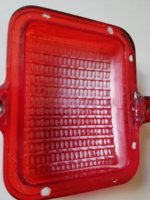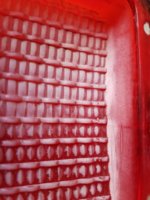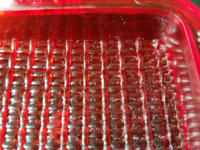Hello all,
Writing to post what NOT to do. I was cleaning up my rear fog light lens. After much time spent carefully removing old gasket material and applied silicone, I noticed that the inside of the lens appeared to have a light mist of over spray making the clarity a bit lacking. I grabbed the first chemical within reach to try to clean it - acetone. A short while later, I realized the error of my ways as the acetone severely clouded the plastic. :eek: And because this is on the inside of the lens with all of the texture, there is no way to sand it out I'm afraid. Lesson learned. Hopefully this post will save someone from repeating my mistake.
Hopefully this post will save someone from repeating my mistake.


Writing to post what NOT to do. I was cleaning up my rear fog light lens. After much time spent carefully removing old gasket material and applied silicone, I noticed that the inside of the lens appeared to have a light mist of over spray making the clarity a bit lacking. I grabbed the first chemical within reach to try to clean it - acetone. A short while later, I realized the error of my ways as the acetone severely clouded the plastic. :eek: And because this is on the inside of the lens with all of the texture, there is no way to sand it out I'm afraid. Lesson learned.




